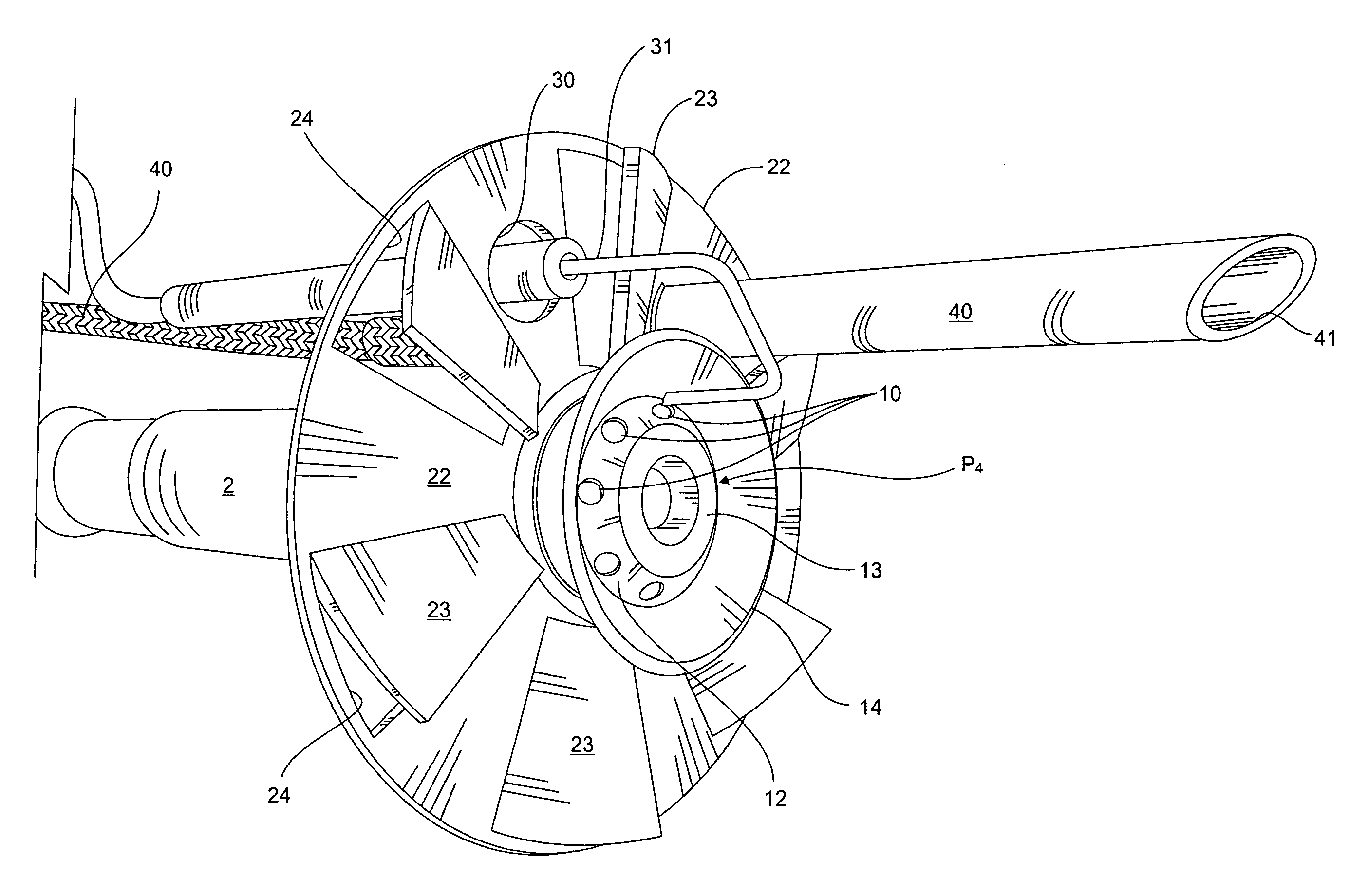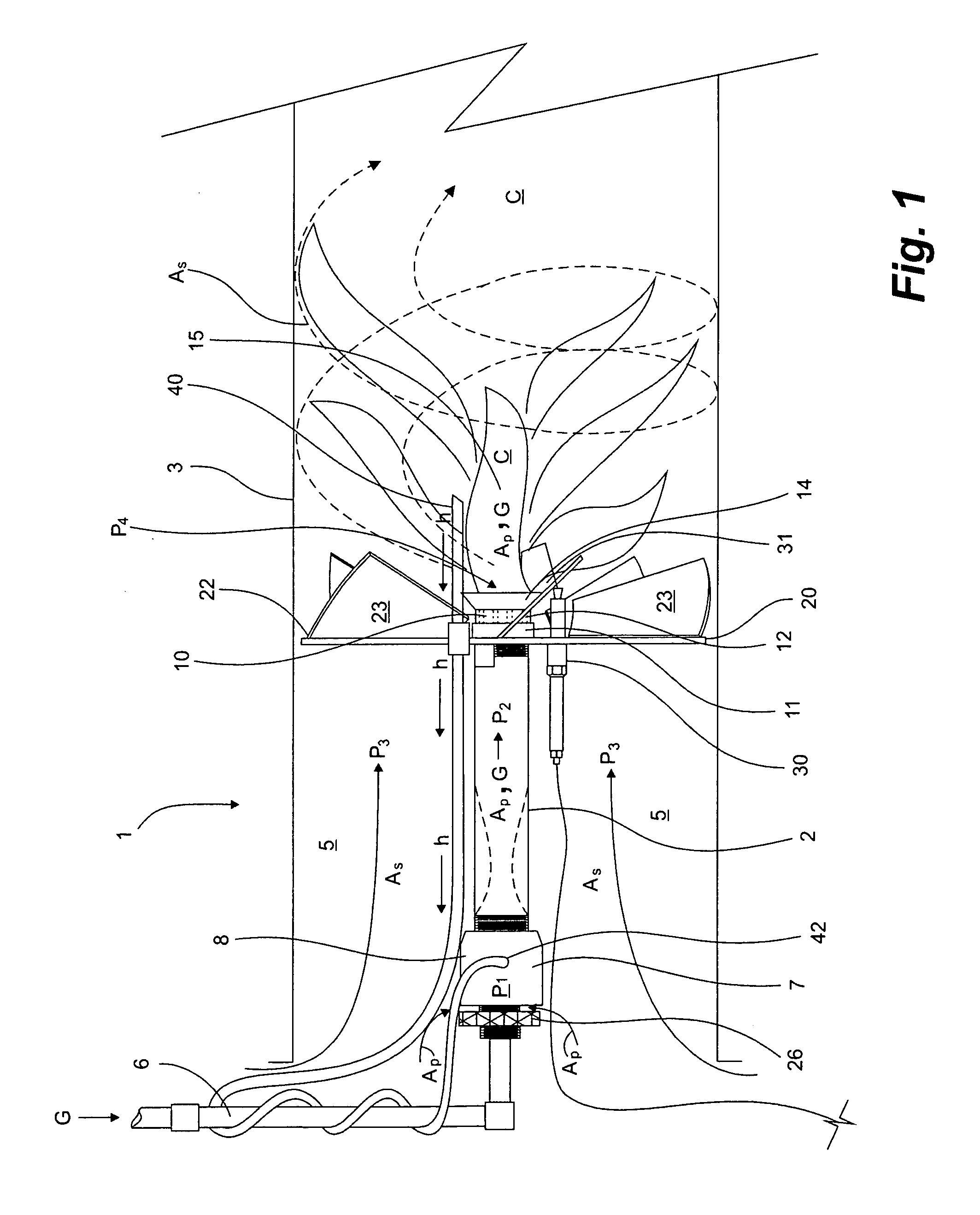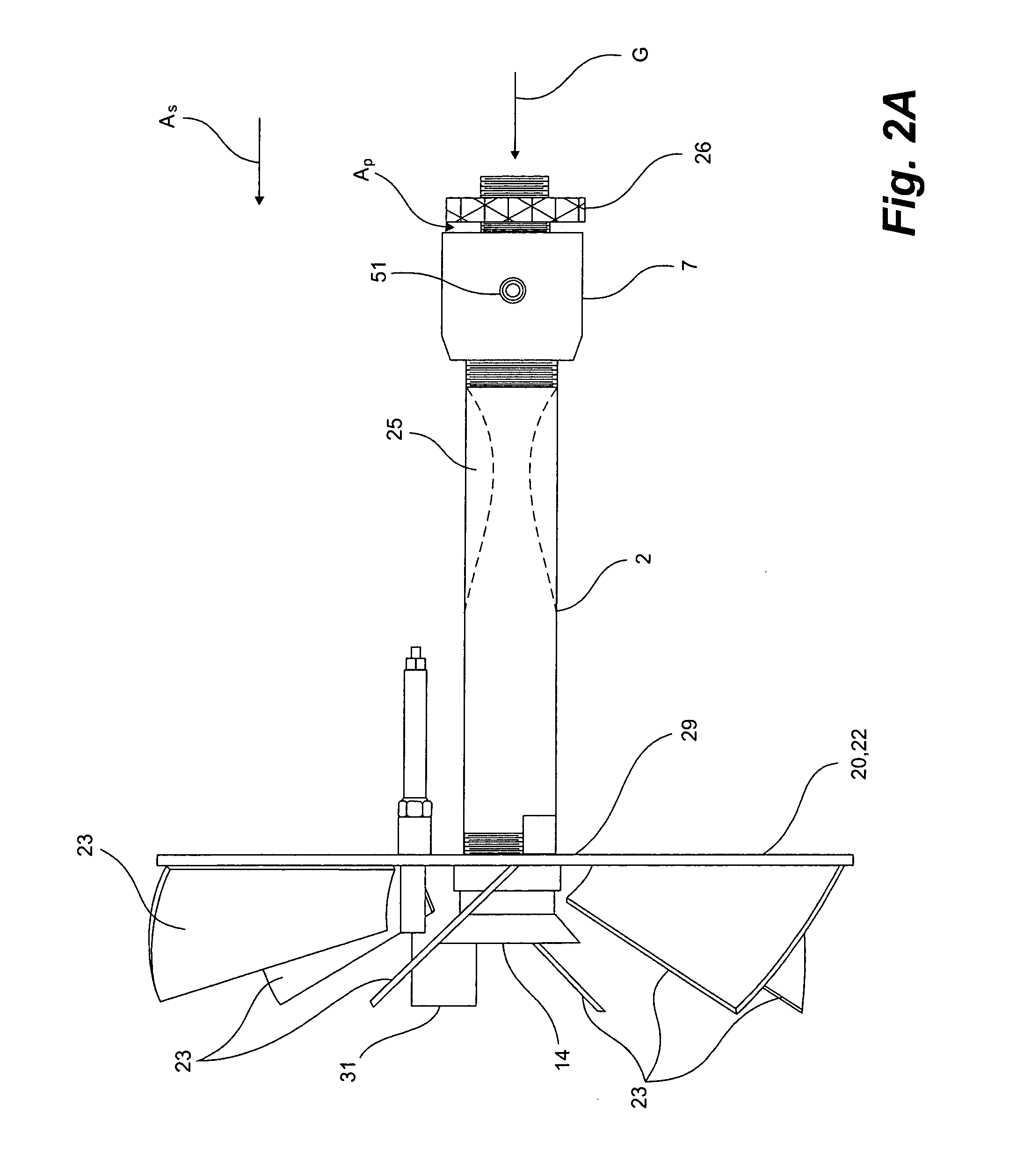Burner assembly
a burner and burner technology, applied in the field of burners, can solve the problems of affecting the operation of the burner assembly, compromising the burner's efficiency, and the flame being lifted from the burner nozzle,
- Summary
- Abstract
- Description
- Claims
- Application Information
AI Technical Summary
Benefits of technology
Problems solved by technology
Method used
Image
Examples
Embodiment Construction
[0019]Having reference to FIGS. 1-8, a burner assembly 1 according to an embodiment of the invention is shown.
[0020]As shown in FIG. 1, the burner assembly 1 comprises a tubular barrel 2 which is mounted in the bore of a firetube or other such housing 3, forming an annulus 5 therebetween. The tubular barrel 2 conducts primary fuel gas G from a gas inlet 6 at a base or proximal end 8 of the tubular barrel 2 to a burner head 12 at a distal end 11 of the tubular barrel 2. The barrel 2 is typically of conventional configuration. The gas at the gas inlet 6 is fed at a first pressure P1 through an orifice 50 to a mixer head 7 (FIGS. 5, 7 and 8) at the proximal end 8. Primary combustion air Ap is drawn into the mixer head 7 via natural draft and the combined air Ap and gas G are mixed therein and flow through the tubular barrel 2 at a second pressure P2 to an orifice or plurality of orifices 10 in the burner head 12. The air and gas discharge from the burner head 12 at a nozzle tip 13 and,...
PUM
 Login to View More
Login to View More Abstract
Description
Claims
Application Information
 Login to View More
Login to View More - R&D
- Intellectual Property
- Life Sciences
- Materials
- Tech Scout
- Unparalleled Data Quality
- Higher Quality Content
- 60% Fewer Hallucinations
Browse by: Latest US Patents, China's latest patents, Technical Efficacy Thesaurus, Application Domain, Technology Topic, Popular Technical Reports.
© 2025 PatSnap. All rights reserved.Legal|Privacy policy|Modern Slavery Act Transparency Statement|Sitemap|About US| Contact US: help@patsnap.com



